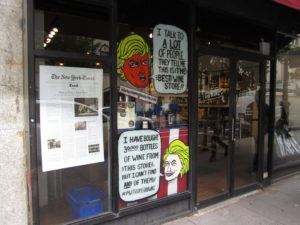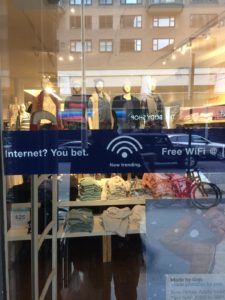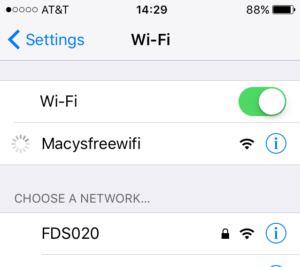
New York a go go
I was lucky enough to travel to New York as a prize for being The Behaviours Agency’s employee of the year. Part of the deal was that I’d have to write about what I’d seen there in terms of retail trends. Good deal, eh?
When writing anything about New York it’s almost impossible to avoid cliché. With that in mind, I’m going to allow myself just one quote as it gives me a link to New York and the city of The Behaviours Agency – Manchester.
It is said that “What Manchester does today, the rest of the world does tomorrow.” As a Greater-Mancunian, I take a bit of pride in that although I’m not sure it’s still as true as it might have been a hundred years ago. If Manchester is to pass on the mantle, then New York is certainly at the front of the queue to take this over.
The two trends I spotted in New York are by no means exclusive to the city but were clearer here than anywhere else I’d seen.
Made to share
It’s not news that lots of people have phones, and that those phones have cameras, and those people like sharing their photos and videos on Facebook, Twitter, Instagram and Snapchat. For as long as people have been sharing images and videos online, marketers have been trying to get them to share pictures and videos of their products, stores and content.
Initially, this was brutal (share a pic of X to win…), but now the technique is more organic. Much in the same way as content marketing is the principle of creating and seeding content that your audience actually wants to consume and share, ‘Made for sharing’ is the idea of creating products, displays etc that people will naturally want to take pictures of and share online.
For the marketing of a specific location – perhaps a store, a restaurant or visitor attraction, ‘made to share’ can work incredibly well. Active social media users arrive at locations and are constantly looking for the selfie, abstract shot or gloating photo of their food to take. The answer for marketers is to give them that shot – make a set piece that people won’t be able to resist uploading. As a bonus, why not put your web address, Instagram account or Twitter handle in there too?
Made to share was apparent in several locations in New York. Chelsea Market is a collection of stores and restaurants and is on the ‘must do’ list for foodies visiting New York. They create seasonal dioramas that are well lit and look great on phone cameras. They make sure that each one has a clear web address in it though, so all the photos are automatically attributable to them without the user having to tag it or mention where they are.
The good news is that ‘made to share’ doesn’t need to be difficult to do. If you’ve gone to the difficulty and expense of making something for people to look at – be it a window display, exhibition stand or novel product, get your web address in there or a hashtag so people viewing the image know who did it.


Phone Friendly
With all these people taking pictures on their phones, they’ll need battery power and a network connection to upload the images.
Travelling around New York, the supply of USB plug sockets (plus cables if you ask for them), and free wi-fi networks was remarkable. A quick google tells me that it costs roughly 0.5p to charge a smartphone from empty to full. How much do you think it costs per year to let customers charge their phones? £100? Less? Clearly, wi-fi will cost more than that but as an investment that can capture customer’s data and generate a tangible customer benefit, its value could be greater.


Whilst it’s possible to find plug sockets and wi-fi in the UK, there are usually strings attached. Sockets away from seating and tables, limited time wi-fi, wi-fi that’s free once you’ve signed up etc. The approach in New York appears completely genuine and benevolent, but it’s clearly giving them a business advantage.
For cafes and restaurants, you’ll get customers who are happy to stay for a while whilst they work and who may leave positive online reviews. For retailers, you have customers who can read reviews online, send pictures to their friends and maybe even buy alternative products from your website. On a very basic level, communicating your free wi-fi can increase footfall as people come into your store to use the internet.
Compared with other initiatives to generate goodwill with customers, such as giving away free hot drinks or loyalty schemes, offering genuinely free wi-fi and being happy to let customers charge their phones seem to be low cost, high return investments.
Let's make you the preferred choice.
Our Preference approach can be applied to any marketing challenge.